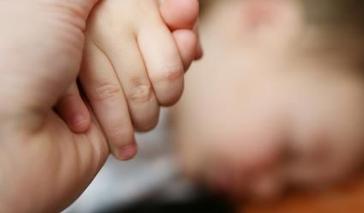- Home
- >
- Articles
- >
- Conditions
- >
- Pediatric
Kidney cysts occur in more than half of people over the age of 50 and can range in size from microscopic to so large that they impact kidney function. Continue Reading
Kidney cysts occur in more than half of people over the age of 50 and can range in size from microscopic to so large that they impact kidney function. Continue Reading
Non-neurogenic voiding dysfunction occurs when an individual??in this case a child??experiences symptoms of urinary incontinence due to a disruption in the signals the bladder sends to the brain, or as a result of behavioral and developmental issues. Continue Reading
Non-neurogenic voiding dysfunction occurs when an individual??in this case a child??experiences symptoms of urinary incontinence due to a disruption in the signals the bladder sends to the brain, or as a result of behavioral and developmental issues. Continue Reading
Undescended testes, in which one or both testicles fail to descend to their normal position, occurs in 3 percent of all infant boys and is the most common male birth defect. Read more about the condition, its causes, and its symptoms. Continue Reading
Undescended testes, in which one or both testicles fail to descend to their normal position, occurs in 3 percent of all infant boys and is the most common male birth defect. Read more about the condition, its causes, and its symptoms. Continue Reading
Intersex conditions, also known as disorders of sex development (DSD), occur when infants are born with a mix of male and female genitalia. The defect lies within the chromosomes, gonads, or anatomical sex, and the degree to which the external and internal reproductive organs are affected varies. Continue Reading
Intersex conditions, also known as disorders of sex development (DSD), occur when infants are born with a mix of male and female genitalia. The defect lies within the chromosomes, gonads, or anatomical sex, and the degree to which the external and internal reproductive organ Continue Reading
Posterior urethral valve (PUV) refers to a defect of the urethra, which is the tube that transports urine from the bladder to the genitals so that urine can pass outside of the body. The condition occurs when the urethral valves have a constricted, slit-like opening that partially obstructs urine fl ... Continue Reading
Posterior urethral valve (PUV) refers to a defect of the urethra, which is the tube that transports urine from the bladder to the genitals so that urine can pass outside of the body. The condition occurs when the urethral valves have a constricted, slit-like opening that par ... Continue Reading
Nighttime bed-wetting in children older than six can be caused by a number of factors, including diabetes, an immature nervous system, and urinary tract irregularities. Tracking down the cause can help inform treatment. Continue Reading
Nighttime bed-wetting in children older than six can be caused by a number of factors, including diabetes, an immature nervous system, and urinary tract irregularities. Tracking down the cause can help inform treatment. Continue Reading
When a ureter swells, it can restrict or even prevent urine from flowing into the bladder. Left untreated, the condition can cause permanent kidney damage. Continue Reading
When a ureter swells, it can restrict or even prevent urine from flowing into the bladder. Left untreated, the condition can cause permanent kidney damage. Continue Reading
Prune belly syndrome, also known as Eagle-Barrett syndrome, refers to a group of birth defects that cause external and internal abnormalities. Continue Reading
Prune belly syndrome, also known as Eagle-Barrett syndrome, refers to a group of birth defects that cause external and internal abnormalities. Continue Reading
Hypospadias, a common male birth defect, occurs when the urethra opens not at the tip of the penis but somewhere along the shaft or even near the scrotum. The condition can cause difficulties urinating and may impact fertility and sexual function, but it's rarely associated with other urinary condit ... Continue Reading
Hypospadias, a common male birth defect, occurs when the urethra opens not at the tip of the penis but somewhere along the shaft or even near the scrotum. The condition can cause difficulties urinating and may impact fertility and sexual function, but it's rarely associated ... Continue Reading
Exstrophy refers to a number of congenital abnormalities that affect the formation of the urinary and genital tracts, the muscles and bones of the pelvis and abdomen, and sometimes the intestinal tract. Continue Reading
Exstrophy refers to a number of congenital abnormalities that affect the formation of the urinary and genital tracts, the muscles and bones of the pelvis and abdomen, and sometimes the intestinal tract. Continue Reading











